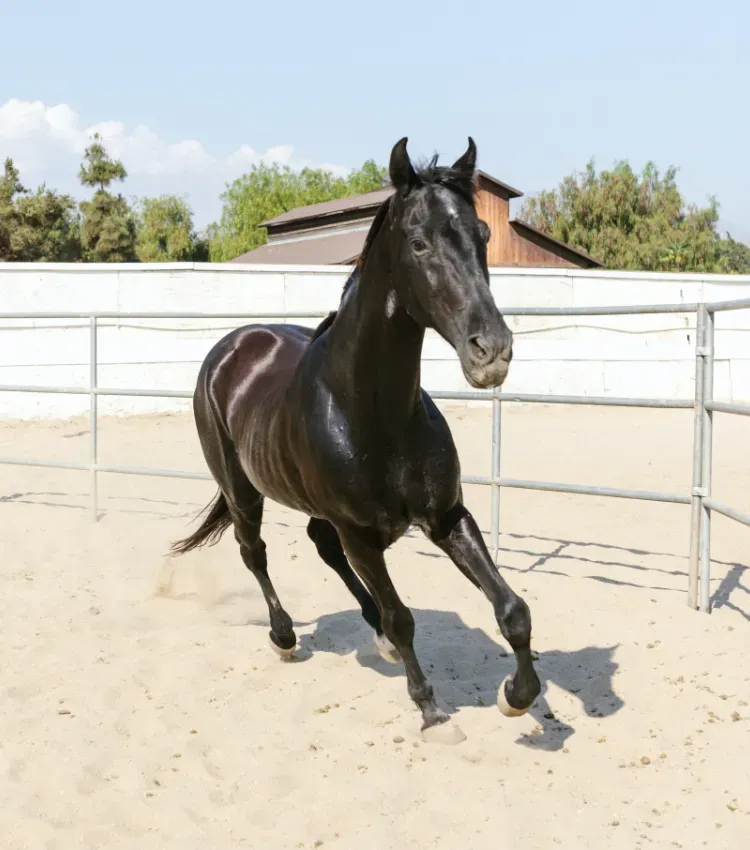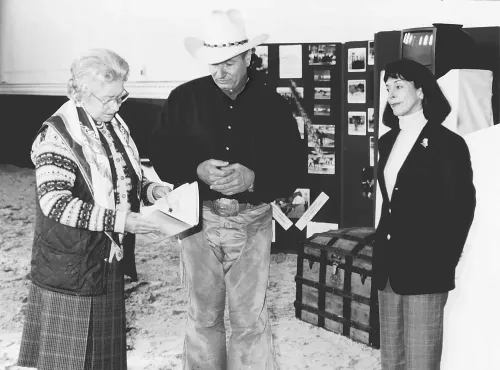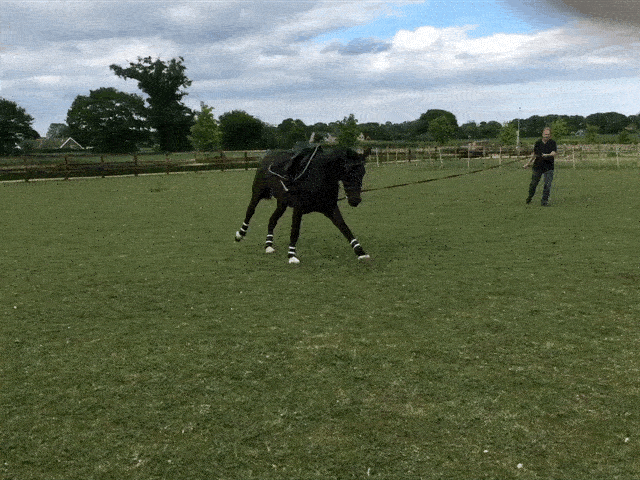
Horses Learn from the Release of Pressure
In the horse world, negative reinforcement means releasing pressure as soon as the horse behaves correctly. This reinforces the horse’s behaviour just before the pressure is released. Inexperienced trainers use negative reinforcement to encourage unwanted behaviour. Avoid this bad mistake.
Using Negative Reinforcement to Encourage Bad Behaviour
Imagine an anxious horse passing a scary object. The horse stops and offers a token rear. The rider uses negative reinforcement by removing the pressure and avoiding the situation. Typically this means going a different way or dismounting. This reinforces the horse’s unwanted rearing and trains him to rear in stressful situations. After a while, this horse becomes a dangerous and confirmed rearer.
Using Negative Reinforcement to Encourage Good Behaviour
In the same situation, an experienced trainer responds differently by keeping the pressure on until the horse behaves correctly. This means quietly facing the fear until the horse puts a step forward and passes (with some horses this can take a very long time). The pressure is released by passing the scare and no longer being made to look at it.

Article Suggestion
Monty Roberts: Revolutionising Horse Training Through Join-UpApply Negative Reinforcement in Incremental Small Steps
As soon as your horse shows the smallest sign of the correct behaviour, take away all pressure. Your horse will quickly learn and progress to what you require.
For example, when teaching your horse to leg yield apply leg pressure but the second your horse makes a sideways move take the pressure off. It will only take a few sessions for him to move nicely away from your leg.
Summary
We've covered these three essential points:
- Never reinforce bad behaviour by giving in.
- Always reward the smallest sign of good behaviour by quickly removing the pressure.
- Be consistent with Negative Reinforcement and never lose your temper.
Some famous horse trainers who use Negative Reinforcement:

Article Suggestion
How to enjoy Lunging an Unbroken horse at 3 Years
